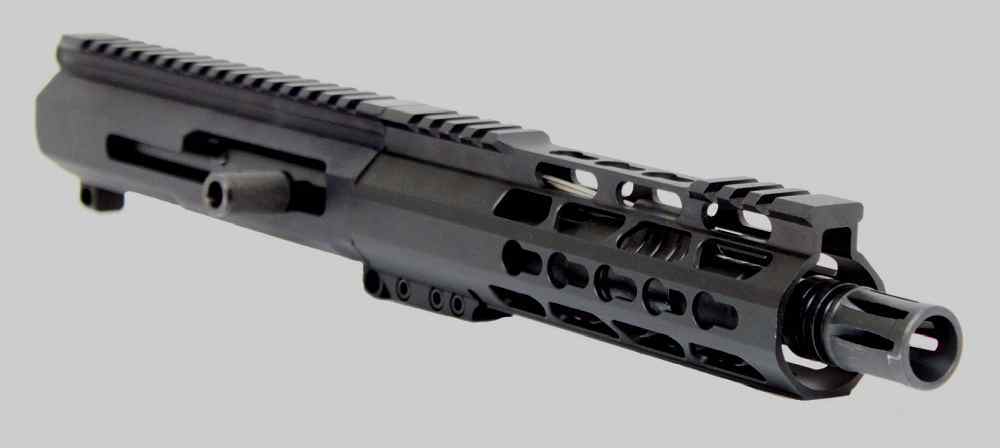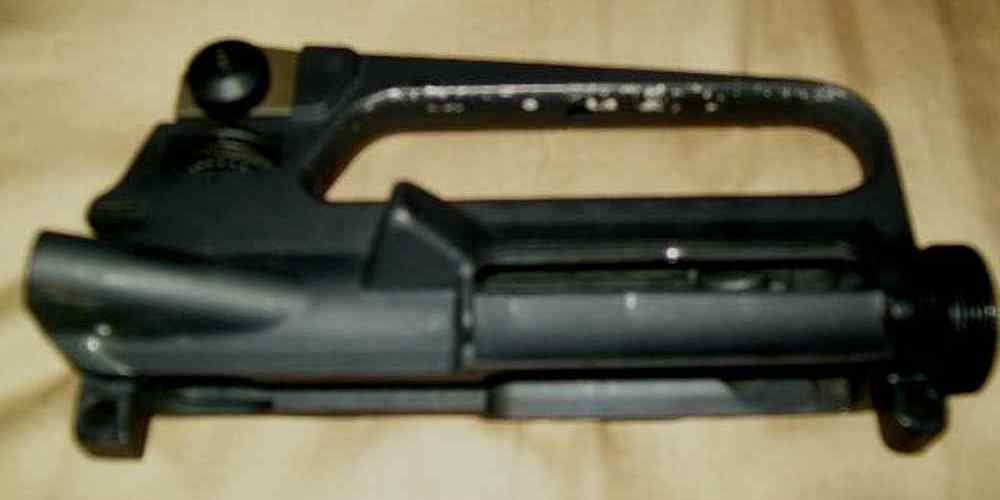“Building the perfect AR15 starts with the right gas system and upper receiver.”
Gas System Options for AR15 Builds
When it comes to building your own AR15, there are a lot of decisions to make. One of the most important choices you’ll need to make is what type of gas system and upper receiver to use. These components play a crucial role in how your rifle functions, so it’s important to understand your options before making a decision.
There are three main gas system options for AR15 builds: direct impingement, piston, and blowback. Each system has its own set of pros and cons, so it’s important to consider your needs and preferences before choosing one.
Direct impingement is the most common gas system used in AR15 rifles. In this system, gas from the fired round is directed back into the upper receiver to cycle the action. This system is lightweight and simple, making it a popular choice for many builders. However, direct impingement systems can be prone to fouling and require more frequent cleaning and maintenance.
Piston systems, on the other hand, use a piston to cycle the action instead of directing gas back into the upper receiver. This can help reduce fouling and keep the rifle running cleaner for longer periods of time. Piston systems are also known for their reliability and durability, making them a good choice for shooters who prioritize these qualities. However, piston systems can be heavier and more expensive than direct impingement systems.
Blowback systems are another option for AR15 builds, though they are less common than direct impingement and piston systems. In a blowback system, the force of the fired round is used to cycle the action. This system is simple and reliable, but it can be less accurate than other gas systems due to the way it operates. Blowback systems are also typically used in pistol-caliber AR15 builds rather than traditional rifle calibers.
When choosing a gas system for your AR15 build, it’s important to consider how you plan to use the rifle. If you prioritize lightweight and simplicity, a direct impingement system may be the best choice for you. If you value reliability and durability, a piston system may be a better fit. And if you’re building a pistol-caliber AR15, a blowback system may be the way to go.
In addition to choosing a gas system, you’ll also need to select an upper receiver for your AR15 build. Upper receivers come in two main types: forged and billet. Forged upper receivers are made by hammering a piece of aluminum into shape, resulting in a strong and durable component. Billet upper receivers are machined from a solid block of aluminum, allowing for more intricate designs and customization options.
When choosing an upper receiver for your AR15 build, it’s important to consider factors such as weight, strength, and aesthetics. Forged upper receivers are typically lighter and more affordable than billet receivers, making them a popular choice for many builders. Billet upper receivers, on the other hand, offer more customization options and can be a great choice for shooters who want a unique look for their rifle.

Ultimately, the gas system and upper receiver you choose for your AR15 build will depend on your individual needs and preferences. By understanding the pros and cons of each option, you can make an informed decision that will help you build a rifle that meets your needs and performs reliably. Whether you choose a direct impingement, piston, or blowback system, and a forged or billet upper receiver, taking the time to research and consider your options will help you build a rifle that you can be proud of.
Choosing the Right Upper Receiver for Your AR15
When it comes to building your own AR15, one of the most important decisions you’ll need to make is choosing the right upper receiver. The upper receiver is a critical component of your rifle, as it houses the bolt carrier group, barrel, and gas system. In this guide, we’ll take a closer look at gas systems and upper receivers to help you make an informed decision for your AR15 build.
Gas systems play a crucial role in the function of your AR15. They are responsible for cycling the action of the rifle, allowing it to chamber a new round and eject the spent casing. There are two main types of gas systems used in AR15 rifles: direct impingement and piston-driven. Direct impingement systems are the most common and are found in the majority of AR15 rifles. In a direct impingement system, gas is tapped from the barrel and directed back into the upper receiver to cycle the action. This system is known for its simplicity and reliability, making it a popular choice among AR15 builders.
Piston-driven gas systems, on the other hand, operate by using a piston to cycle the action of the rifle. This system is often preferred by shooters who want a cleaner and cooler-running rifle, as the gas is vented out of the rifle rather than being directed back into the upper receiver. While piston-driven systems can offer some advantages in terms of reliability and cleanliness, they are typically more expensive and can be more complex to install and maintain.
When choosing an upper receiver for your AR15 build, it’s important to consider the type of gas system you want to use. Most upper receivers are designed to work with a specific type of gas system, so be sure to choose one that is compatible with your chosen system. Additionally, you’ll want to consider the material and construction of the upper receiver. Aluminum is the most common material used for upper receivers, as it is lightweight and durable. However, there are also options available in steel and polymer for those looking for something different.
Another factor to consider when choosing an upper receiver is the style of the receiver. There are two main styles of upper receivers: flat top and carry handle. Flat top receivers are the most common and feature a Picatinny rail on top for mounting optics and accessories. Carry handle receivers, on the other hand, have a built-in carry handle that can be used for carrying the rifle or as a rear sight. The style of receiver you choose will depend on your personal preferences and intended use for the rifle.
In conclusion, choosing the right upper receiver for your AR15 build is a critical decision that will impact the performance and functionality of your rifle. Consider factors such as gas system type, material, construction, and style when making your decision. By taking the time to research and choose the best upper receiver for your needs, you can ensure that your AR15 build is reliable, accurate, and tailored to your preferences.
How to Install a Gas Block on Your AR15
If you’re a DIY enthusiast looking to build your own AR15, one of the key components you’ll need to install is the gas block. The gas block is a crucial part of the gas system in your AR15, responsible for regulating the flow of gas from the barrel to cycle the action of the rifle. In this guide, we’ll walk you through the steps of installing a gas block on your AR15.
Before you begin, make sure you have all the necessary tools and parts for the job. You’ll need a gas block, a gas tube, a roll pin, a set of punches, a hammer, a torque wrench, and some thread locker. It’s also a good idea to have a vise and a vise block to securely hold your upper receiver during the installation process.
To start, remove the handguard from your AR15 to access the gas block area. Next, remove the gas tube from the gas block by pushing out the roll pin that secures it in place. Once the gas tube is removed, you can then remove the old gas block from the barrel.
Before installing the new gas block, make sure to clean the barrel and gas port thoroughly to ensure proper function. Once the barrel is clean, slide the new gas block onto the barrel and align it with the gas port. Use a vise block to secure the upper receiver in a vise, making it easier to work on.
Next, insert the gas tube into the gas block and align it with the gas port on the barrel. Use a roll pin to secure the gas tube in place, making sure it is flush with the gas block. Use a set of punches and a hammer to drive the roll pin into place, ensuring a secure fit.
Once the gas block is installed, it’s important to check for proper alignment and function. Make sure the gas tube is aligned with the gas port on the barrel and that there are no obstructions blocking the flow of gas. You can test the gas system by cycling the action of the rifle and checking for proper function.
Finally, use a torque wrench to tighten the set screws on the gas block to the manufacturer’s specifications. Apply a small amount of thread locker to the set screws to prevent them from loosening over time. Once the set screws are tightened, reassemble the handguard onto your AR15 and you’re ready to hit the range.
Installing a gas block on your AR15 may seem like a daunting task, but with the right tools and a little know-how, it can be a straightforward process. By following these steps and taking your time, you can ensure that your gas system is properly installed and functioning correctly. So grab your tools and get to work – you’ll be hitting the range with your custom-built AR15 in no time.
Upgrading Your AR15 Gas System for Better Performance
If you’re an AR15 enthusiast looking to upgrade your rifle for better performance, one area you may want to consider is the gas system and upper receiver. These components play a crucial role in how your rifle functions, so making the right upgrades can have a significant impact on your shooting experience.
When it comes to gas systems, there are a few different options to choose from. The most common type is the direct impingement system, which is found in most standard AR15 rifles. This system works by diverting gas from the fired round back into the bolt carrier group to cycle the action. While this system is reliable and widely used, some shooters may find that it produces more felt recoil and carbon buildup compared to other systems.
One alternative to the direct impingement system is the piston-driven system. In this system, gas is diverted into a piston located near the front of the rifle, which then drives the bolt carrier group to cycle the action. This can result in a cleaner and cooler-running rifle, as well as potentially reducing felt recoil. However, piston-driven systems can be more expensive and may require more maintenance compared to direct impingement systems.
Another option to consider is an adjustable gas block. This component allows you to fine-tune the amount of gas that is diverted into the gas system, which can help optimize your rifle’s performance. By adjusting the gas block, you can reduce felt recoil, improve reliability, and even reduce wear and tear on your rifle. This can be especially useful if you plan on shooting a variety of ammunition types or if you want to suppress your rifle.
When upgrading your gas system, it’s important to also consider your upper receiver. The upper receiver houses the bolt carrier group and barrel, and plays a critical role in how your rifle functions. Upgrading to a high-quality upper receiver can improve accuracy, reliability, and overall performance.
One popular upgrade for AR15 builders is a billet upper receiver. Billet receivers are machined from a solid block of aluminum, which can result in a stronger and more rigid receiver compared to forged receivers. This can help improve accuracy by reducing flex and vibration during firing. Additionally, billet receivers often have more intricate and aesthetically pleasing designs compared to forged receivers.
Another option to consider is an upper receiver with a forward assist. The forward assist is a small button located on the side of the receiver that allows you to manually push the bolt into battery if it fails to fully close. While not always necessary, a forward assist can be a useful feature to have, especially in high-stress situations where you need to quickly get your rifle back into action.
In conclusion, upgrading your AR15 gas system and upper receiver can have a significant impact on your rifle’s performance. Whether you choose to switch to a piston-driven system, install an adjustable gas block, or upgrade to a billet upper receiver, these upgrades can help improve accuracy, reliability, and overall shooting experience. By carefully considering your options and choosing components that best suit your needs, you can take your AR15 to the next level.
Troubleshooting Common Issues with AR15 Gas Systems
Building your own AR15 can be a rewarding experience, but it can also come with its fair share of challenges. One area that often causes confusion for builders is the gas system and upper receiver. Understanding how these components work together is crucial for ensuring your rifle functions properly. In this guide, we will discuss some common issues that can arise with AR15 gas systems and upper receivers, as well as how to troubleshoot them.
One of the most common issues that builders encounter with AR15 gas systems is over-gassing. This occurs when there is too much gas pressure being sent back into the system, which can cause excessive recoil and wear on the rifle. One way to address this issue is by installing an adjustable gas block. This allows you to fine-tune the amount of gas being sent back into the system, ensuring a smoother shooting experience.
On the other hand, under-gassing is another common issue that builders may face. This occurs when there is not enough gas pressure being sent back into the system, which can result in failures to cycle properly. If you are experiencing under-gassing, you may need to check for any obstructions in the gas tube or block, as well as ensure that your gas port is properly aligned.
Another issue that can arise with AR15 gas systems is gas leaks. This can occur at various points in the system, such as the gas block, gas tube, or even the upper receiver. If you suspect a gas leak, it is important to inspect each component carefully to identify the source of the leak. In some cases, you may need to replace a damaged or worn-out part to resolve the issue.
In addition to gas system issues, builders may also encounter problems with their upper receivers. One common issue is a loose or improperly seated barrel. This can cause accuracy issues and may even lead to dangerous malfunctions. To address this issue, ensure that your barrel is properly torqued and aligned with the upper receiver. You may also want to consider using a barrel nut wrench to ensure a secure fit.
Another common issue with upper receivers is a failure to eject spent casings. This can be caused by a variety of factors, such as a dirty or worn extractor, or an improperly sized gas port. If you are experiencing ejection issues, try cleaning and inspecting your extractor for any signs of wear. You may also need to adjust your gas system to ensure proper cycling.
In conclusion, troubleshooting common issues with AR15 gas systems and upper receivers can be a challenging but rewarding process. By understanding how these components work together and being able to identify and address potential issues, you can ensure that your rifle functions properly and reliably. Remember to take your time and carefully inspect each component to determine the root cause of any problems you may encounter. With patience and attention to detail, you can build a high-quality AR15 that will serve you well for years to come.






